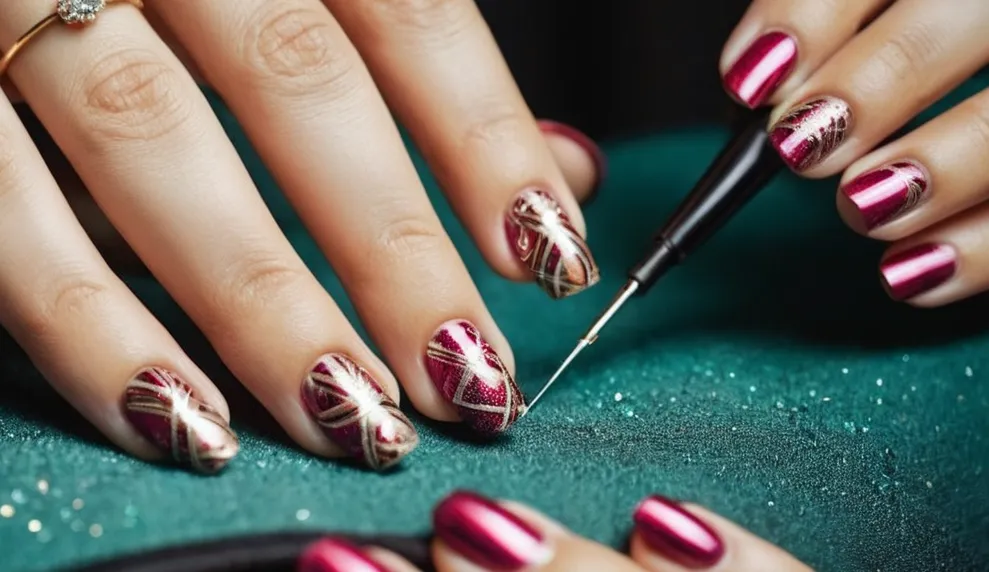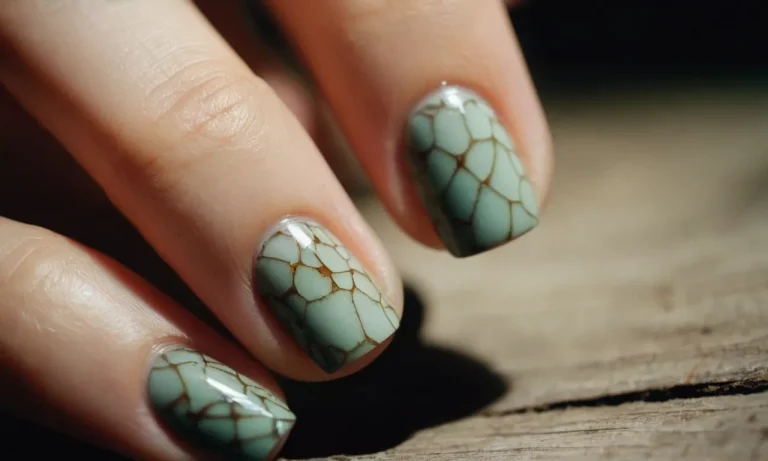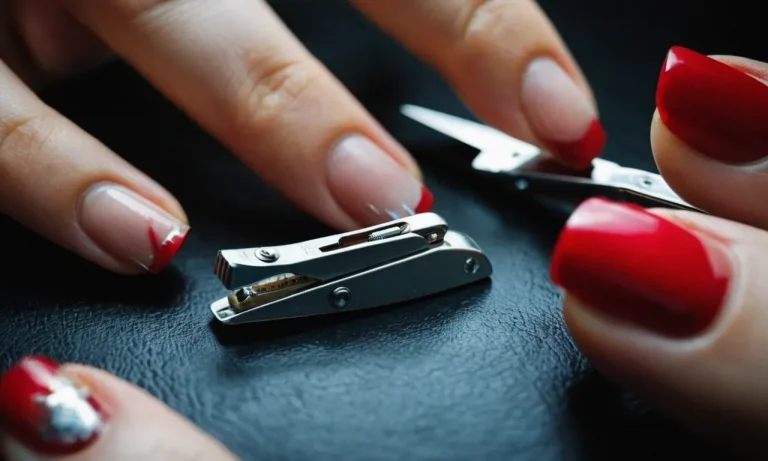How To Become A Nail Tech: The Complete Guide
Getting into a career as a nail technician can be an exciting prospect for those interested in beauty, design, and creativity. Plus, it has the potential to be a lucrative and flexible career path. If you’re wondering how to get started in the nail industry, you’ve come to the right place!
If you’re short on time, here’s a quick answer to your question: The main steps to becoming a nail tech include getting the proper training and education through nail tech schools or apprenticeships, obtaining a nail technician license in your state by passing written and practical exams, developing technical skills through practice, building a professional portfolio, and finding a job at a salon or spa.
In this comprehensive guide, we will outline everything you need to know to launch a successful and rewarding career as a nail technician.
Complete Nail Technician Training
Enroll in a nail tech school program
One of the best ways to receive comprehensive training to become a nail technician is to enroll in a nail tech school program. These programs teach you everything you need to know through a mix of theory and hands-on practice.
In the classroom, you’ll learn about nail anatomy, chemistry, diseases and disorders. In the student salon, you’ll get experience with real clients doing manicures, pedicures, acrylics, gels and more. Most full-time programs take 3-9 months to complete.
Many community colleges and private beauty schools offer nail programs leading to a certificate or diploma. The average cost ranges from $4,000-$10,000. Make sure your chosen school is licensed in your state. Also check that it prepares you for your state licensing exam.
Do an apprenticeship with a salon
Another option is to apprentice under a licensed nail tech at a salon. This allows you to learn techniques directly in the workplace. Apprenticeships typically last 6-12 months and involve observing the mentor nail tech at first.
Gradually you begin doing simple tasks before building up to entire manicures/pedicures. Some key advantages are you earn while you learn, there’s no tuition cost and you make industry connections.
Check your state’s apprenticeship program requirements in case you need to register officially. Make sure you and the salon owner sign a written agreement spelling out the training schedule, learning objectives and any pay or compensation details.
Take online nail tech courses
For additional flexibility, online courses allow you to study nail care from home in your own time. Many programs include pre-recorded video lessons, downloadable reference guides, quiz assessments and even instructor support.
Popular course topics include business building, salon management, advanced nail art, client communication, sanitation practices and state law/ethics.
While online programs can supplement your knowledge, most states require an in-person, hands-on program for licensing. Common providers of online courses include beauty schools and education platforms like MiladyPro and Schoon.
Pricing options include à la carte courses or all-access monthly subscriptions.
Get Licensed in Your State
Check your state’s licensing requirements
The requirements to become a licensed nail technician vary by state, so the first step is to check with your state’s cosmetology board. Generally you will need to complete an accredited nail technician program, which can range from 100 to 600 hours of education.
Some states require as little as 12 hours of education! You may also need to be a certain minimum age, have a high school diploma or GED, and pass written and practical licensing exams.
Submit license application and fees
Once you complete your accredited nail tech program and meet your state’s eligibility criteria, you can submit a new license application along with any required fees to your state cosmetology board. For example, in California the application fee is currently $9 while in Texas it is $52.
The application will require documents like your school transcripts, proof of completing exams, fingerprints, etc. Your instructor can provide guidance on the specifics for your state.
Pass written and practical exams
Nearly all states require passing scores on both written and practical exams to become licensed as a nail technician. The written test covers topics like sanitation, nail structure, diseases and disorders, manicure techniques, laws and regulations, and more.
The hands-on exam requires you to demonstrate competency with skills like nail filing and shaping, cuticle care, gel polish application, acrylics, etc within allotted time limits. Your nail technician program will prepare you for both tests.
Some states use a national exam while others administer their own. Exam fees are usually $50 to $100+. With thorough prep you can pass on your first try!
Develop Your Nail Tech Skills
Practice nail techniques regularly
To become a great nail tech, you need to constantly practice and refine your skills. Set aside time each day to work on different nail techniques – whether it’s sculpting acrylic nails, doing nail art, or learning new designs. The more you practice, the faster and more precise you’ll become.
Start with simple designs and gradually work your way up to more complex nail art. Great nail techs can sculpt a perfect set of nails in 30 minutes or less!
Improve speed and precision
When you’re working on real clients, you need to be able to complete services in a timely manner without sacrificing quality. Time yourself when practicing different techniques to improve your speed. For example, see how fast you can do a basic manicure and pedicure.
You can also practice doing designs on fake nail tips to get faster at nail art. Precision is equally important in nail technology. Make sure cuticle cleaning, filing, polish application, and all other steps are done with care and attention to detail.
The more you practice, the better your precision will become.
Stay up-to-date on trends and techniques
The nail industry is constantly evolving with new products, trends, and techniques. Successful nail techs make an effort to stay current on the latest styles. Read nail magazines and blogs, watch tutorial videos, and attend industry trade shows and classes.
This will help you learn new skills like ombre nails, chrome powder designs, and 3D acrylic art. You’ll also be knowledgeable about what clients will request. For example, almond and square shaped nails are trendy right now for 2023.
Knowing the most popular nail trends and techniques will make you a more versatile, skilled nail technician and allow you to take on a wider variety of clients.
By regularly practicing fundamental nail skills as well as keeping up with the latest industry styles, you’ll be on your way to developing expert-level abilities as a nail technician. With dedication and consistency, your speed, precision, and creativity will flourish.
Practice truly makes perfect when it comes to nails!
Create a Professional Portfolio
Photograph your work
High-quality photographs of your nail art and services are crucial for showcasing your skills to potential clients and employers. Use a good camera, proper lighting, and neutral backgrounds to accurately capture the intricacies of your work.
Photograph nails from multiple angles and include before/after comparisons when relevant. You may consider investing in a lightbox setup or enlisting a photographer friend to take professional shots of your portfolio pieces.
Make a website to showcase skills
A personal website dedicated to your nail technician services allows you to display photographs, descriptions of services offered, testimonials, and contact information all in one place. This is an invaluable asset when job hunting or trying to attract new clients.
Focus on ease of navigation, professional design, and clear calls-to-action to drive traffic and engagement. Ensure your best work is prominently featured through a gallery page or homepage slideshow. Update with new photographs regularly to keep prospective clients and employers interested.
Share work on social media
Active social media profiles on platforms like Instagram, Facebook, and Pinterest give incredible visibility for nail artists to gain followers, get feedback, and land clients. Post high-quality photos showcasing your signature style and creative flair.
Use relevant hashtags and engage with your audience by liking comments, responding promptly, and even reposting user-generated content. Social proof of an established following and genuine interactions can increase interest dramatically. Just be sure to maintain professionalism on all networks.
Find a Nail Tech Job
Apply to local salons and spas
One of the best ways to find a nail tech job is to directly apply to local salons and spas. Visit salons in your area and ask if they are hiring or accepting resumes for nail tech positions. Leave a copy of your resume and be sure to highlight your licensure, specialized training, and any previous nail tech experience.
You can also search online job boards to find nail tech job listings in your city. Look on sites like Indeed, LinkedIn, and local classifieds. Salons often post openings when they need to add staff. Pay attention to the job qualifications and highlight your relevant skills in your application.
Market yourself to stand out
The nail industry is competitive, so you need to market yourself to stand out. Create a portfolio showcasing your work with photos of nail art, manicures, pedicures, and more. Share this with salons when you apply. You can also make business cards to leave behind.
Building an online presence can also be beneficial. Make social media profiles displaying your work. Use hashtags like #nailtech and #nailart to connect with more potential clients and salon owners. Consider making reels or YouTube tutorial videos as well.
Consider being self-employed
Many nail techs choose to work as independent contractors instead of employees at a salon. As a self-employed nail tech, you run your own business, set your own schedule, choose your clients, and determine your own service menu and pricing.
This requires entrepreneurial skills but allows for more control and potentially higher earning capacity.
If going solo interests you, develop a thorough business plan covering your target market, services, pricing, branding, marketing strategy, costs, projected revenue, etc. Invest in the appropriate tools and equipment for a professional at-home or mobile setup.
Continually invest back into your branding and marketing to attract a solid clientele.
Conclusion
Becoming a licensed, professional nail tech takes commitment, practice, and perseverance. But the effort is well worth it for the chance to do creative and rewarding work helping clients look and feel their best.
With the proper training, licensure, portfolio, and drive, you’ll be well on your way to an exciting career in the nail industry.







